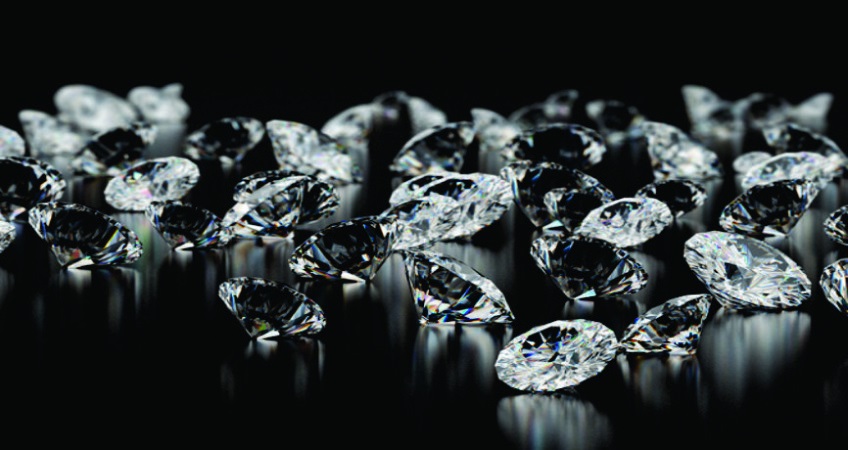The diamond is one of nature’s most beautiful and precious creations. Valuable and desired, it is perfect for creating incredible jewelry such as diamond engagement ring and the wedding proposal or to mark unforgettable moments in your life. How about knowing a little more about this stone so present in models of engagement ring, wedding ring and other very special jewels?
The diamond is the official stone of the month of April
There is an old tradition that relates a specific stone to a month of anniversary. Currently, the diamond is recognized as the birthday stone for those born in April. Diamond is also highly appreciated as engagements ring. It has been a custom to mark the moment with diamond rings. If you want to buy premium quality diamond engagement rings online, Alexander Sparks is the ideal option to you. Visit the largest online collections of diamond engagement rings in affordable prices. Be amazed with lot of other accessories and designs.
What is the meaning of the diamond?
Surely you’ve heard the phrase “diamonds are eternal”, haven’t you? Because it is a very resistant stone and of incomparable hardness, the stone has become the symbol of durability and constancy. It is therefore perfect for representing eternal love, commitment and fidelity between two people. The translucent shine of the diamond is also linked to truth, purity and perfection. These characteristics are just the foundation of something much bigger. In fact, diamonds are little gems waiting for a meaning that only you can give them. Its history, its affection and devotion will complete the true meaning of this admired stone.
Diamond’s characteristics
The chemical composition of the diamond and its structure make it a unique stone among all minerals. Typically, the diamond is made of 99.95% carbon. The other 0.05% includes some traces of other elements that are not part of the diamond structure itself. But that can influence the color and shape of the precious gem. Diamond is the hardest material on the planet: 58 times harder than any other material in nature. Graphite, which is also composed only of carbon, has a crystal structure formation process that is very different from diamond. The result is a soft material.
So, while you can write with graphite on a paper, the diamond is so hard that you can only scratch it with another diamond. This gem is also quite resistant to heat. It is only possible to melt a diamond at a temperature of 5,500 degree C, which means that diamonds would disappear only if the Earth came into contact with the sun. The diamond also has remarkable optical properties. With a high dispersion index (0.044) and a refractive index of 2.417-2.419, the diamond is able to produce a high gloss and beautiful bursts of light. Because it is a natural stone, some qualities of the diamond vary according to each specimen. Better quality diamonds have less impurities and are almost colorless.

Diamond resistance: diamond is the hardest mineral on the planet
As previously described, due to the chemical structure and the conditions in which it is formed, diamond is the hardest natural substance known to man. Hardness is a property that measures the resistance that a material has to the risk. That is, the removal of particles from its surface by another material. The most widely used standard for measuring hardness is the Mohs scale, invented by scientist Friedrich Mohs. On this scale, the diamond is at the top, presenting a hardness of 10 Mohs. The diamond has a property known as cleavage, which determines some points of weakness along its structure. Because of this property, it is possible to cut rough diamonds, transforming them into beautiful jewels.
Does diamond shine in the dark?
Some diamonds have an interesting feature: fluorescence. Fluorescence diamonds have the ability to emit visible light when exposed to ultraviolet radiation. According to a report by the GIA, in the last decade, about 25% to 35% of the diamonds analyzed showed some degree of fluorescence. With 95% of diamonds that exhibit fluorescence reflect shades of blue. This aspect is hardly strong enough to interfere with the diamond’s appearance. However, diamonds are formed under enormous pressure and temperature, approximately 160 km from the Earth’s surface, in specific rocks.
What is the value of a diamond?
Until the mid-twentieth century, there was no criterion for evaluating diamonds. GIA created the 4 C’s as a method to classify the qualities of the diamond. Diamonds are classified into: Color, Carat, Clarity and Cut. The method worked and is currently the most accepted standard for evaluating diamonds. Thus, the value of a diamond is determined by the combination of the four characteristics present in the 4 C’s. The better the quality of color, purity and cut, the more expensive a diamond is. Likewise, the heavier a diamond, the more expensive the carat value. It is important to understand that any subtle increase in the quality and weight of the diamond can have a huge impact on the value of a jewel. This is because larger and higher quality stones are rarer and therefore more valuable.
Of all 4 C’s, the cut is the most important feature
Although common sense usually places more emphasis on color and purity, the cut is the feature that most interferes with the look of the diamond. The cut concerns not only the shape of the diamond engagement ring, but also the proportions and symmetry of the stone. It is the quality of the cut that will determine how much the stone will shine and whether it will produce the famous burst of light.
Scholars believe that all commercially exploited diamonds were formed in the Earth’s mantle and reached the surface through volcanic eruptions. On average, 75% of the diamonds mined in the world are not suitable for making jewelry. These stones are sent for industrial use, manufacture of polishing, drilling and cutting instruments. Only 25% is perfect to make diamond jewellery. It is why the price tags are higher than anything.










